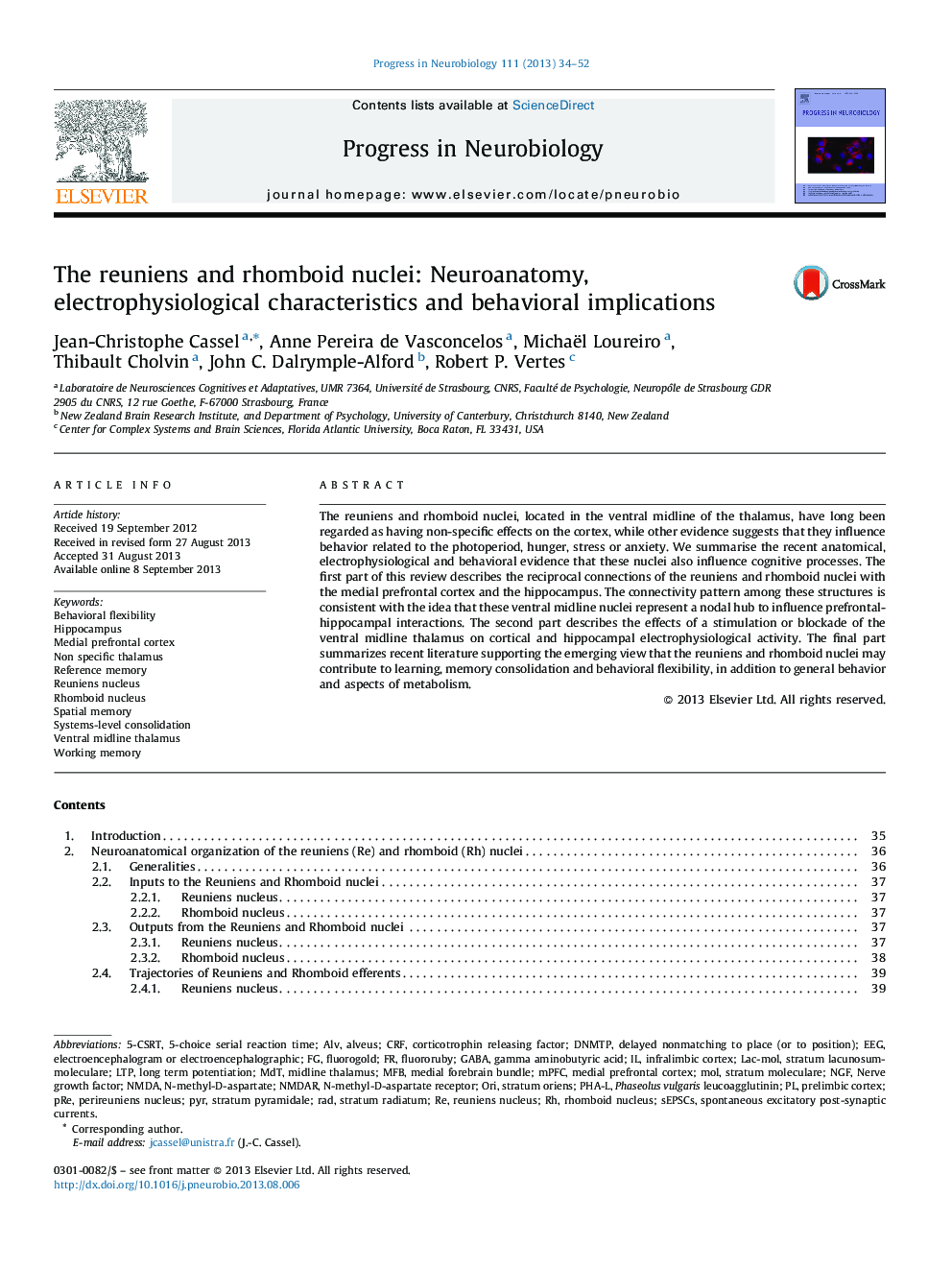| Article ID | Journal | Published Year | Pages | File Type |
|---|---|---|---|---|
| 6286543 | Progress in Neurobiology | 2013 | 19 Pages |
â¢Knowledge about structure and function of rhomboid and reuniens nuclei is reviewed.â¢Both nuclei have reciprocal connections with the prefrontal cortex and hippocampus.â¢Electrophysiological data show reuniens-driven modulations in hippocampus and cortex.â¢Both thalamic nuclei participate in physiological and metabolic regulations.â¢They contribute to cognitive functions such as learning, memory, perhaps flexibility.'
The reuniens and rhomboid nuclei, located in the ventral midline of the thalamus, have long been regarded as having non-specific effects on the cortex, while other evidence suggests that they influence behavior related to the photoperiod, hunger, stress or anxiety. We summarise the recent anatomical, electrophysiological and behavioral evidence that these nuclei also influence cognitive processes. The first part of this review describes the reciprocal connections of the reuniens and rhomboid nuclei with the medial prefrontal cortex and the hippocampus. The connectivity pattern among these structures is consistent with the idea that these ventral midline nuclei represent a nodal hub to influence prefrontal-hippocampal interactions. The second part describes the effects of a stimulation or blockade of the ventral midline thalamus on cortical and hippocampal electrophysiological activity. The final part summarizes recent literature supporting the emerging view that the reuniens and rhomboid nuclei may contribute to learning, memory consolidation and behavioral flexibility, in addition to general behavior and aspects of metabolism.
